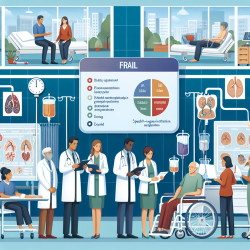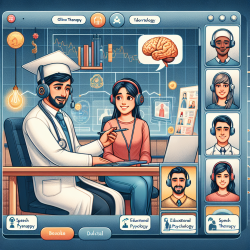Introduction
In the realm of criminal law, the integration of neuroscience and behavioral genetics has significantly evolved, shaping the landscape of legal defenses and judicial outcomes. The research article "Neuroscience and Behavioral Genetics in US Criminal Law: An Empirical Analysis" provides a comprehensive examination of this integration, revealing its growing influence in the courtroom. For practitioners in special education and therapy, understanding these developments can enhance their skills and provide new avenues for research and application.
Key Findings and Implications
The study identifies a substantial increase in the use of neurobiological evidence by criminal defendants, with over 1,585 judicial opinions between 2005 and 2012 discussing such evidence. This trend highlights the importance of understanding the intersection between neuroscience, genetics, and law, as it offers insights into human behavior that can be crucial for practitioners working with individuals who have neurological or genetic conditions.
Applications for Practitioners
For practitioners, particularly those involved in special education and therapy, the findings from this research can be instrumental in several ways:
- Improved Assessment Techniques: Understanding the role of neurobiological evidence can aid in developing more accurate assessment tools for evaluating cognitive and behavioral competencies.
- Enhanced Therapeutic Strategies: By incorporating insights from neuroscience and genetics, practitioners can tailor therapeutic interventions to better meet the needs of individuals with specific neurobiological profiles.
- Informed Advocacy: Practitioners can advocate more effectively for their clients by leveraging neurobiological evidence to support claims related to competency and behavioral predispositions.
Encouraging Further Research
The integration of neuroscience and behavioral genetics in criminal law underscores the need for continued research in these fields. Practitioners are encouraged to engage with ongoing studies and contribute to the expanding body of knowledge. This involvement not only enhances professional skills but also ensures that therapy and educational practices remain aligned with the latest scientific developments.
Conclusion
The use of neurobiological evidence in criminal law is a testament to its potential to improve decision-making and reduce errors within the justice system. For practitioners, embracing these insights can lead to more effective interventions and advocacy efforts. As neuroscience and behavioral genetics continue to influence legal and therapeutic landscapes, staying informed and involved in research will be crucial for practitioners aiming to enhance their skills and impact.
To read the original research paper, please follow this link: Neuroscience and behavioral genetics in US criminal law: an empirical analysis.










